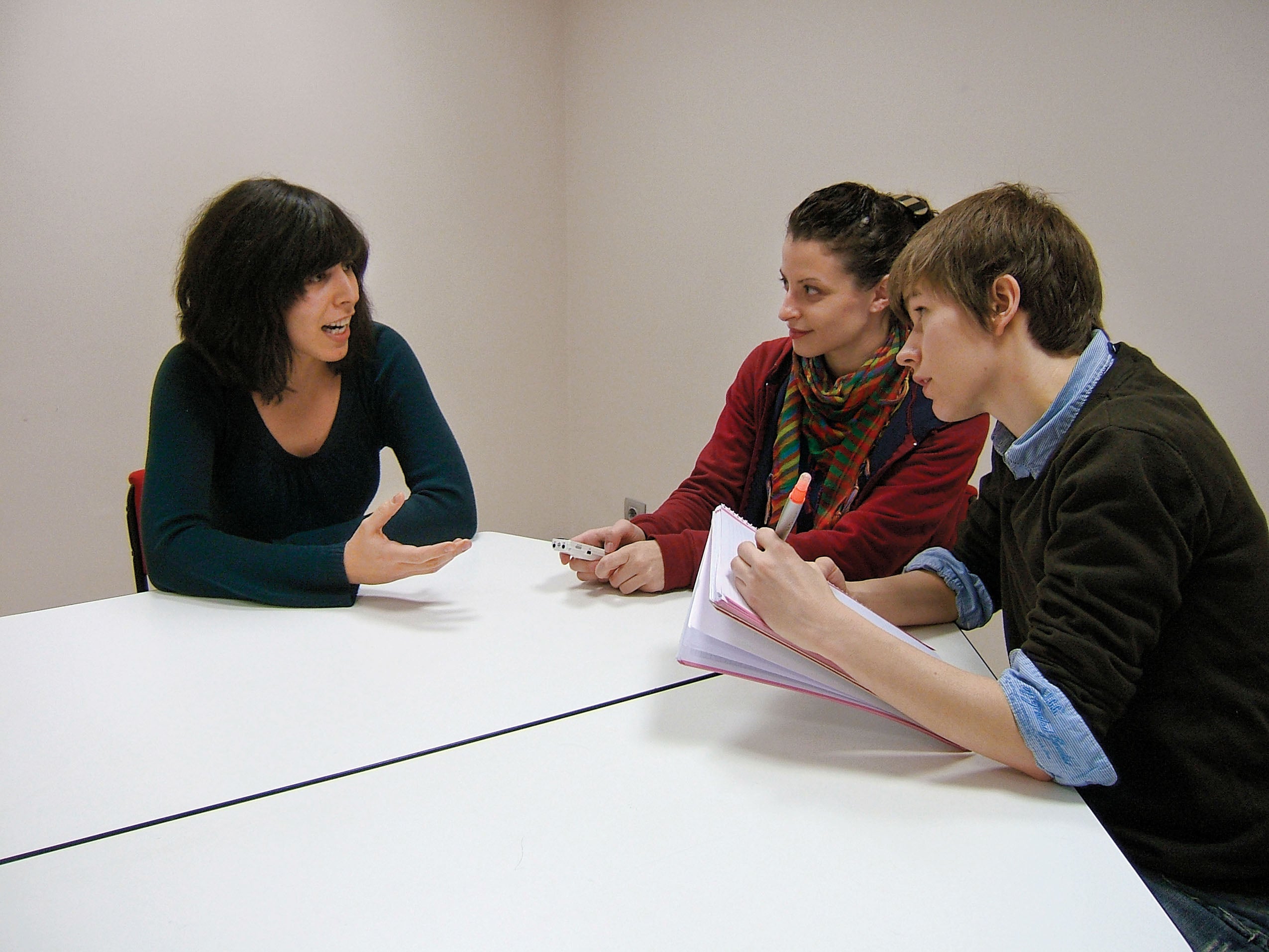In 2007, when Erika Rickard was a 2L at Harvard Law, same-sex marriage had been legal in Massachusetts for more than three years. By that time, some of the clients she was assisting through the Gay, Lesbian, Bisexual and Transgender Law Clinic were seeking to dissolve their unions. The law was so new, she found little precedent.
Rickard knew that in 2005, Spain had passed a national bill legalizing same-sex marriage (joining the Netherlands, Belgium and Canada). But Spain and Canada had not only made such marriage possible, they had eliminated all legal distinctions between same-sex and heterosexual unions. Rickard decided she wanted to see for herself what Spanish law translated to for couples and their children, and what lessons she could bring back to the U.S.
This year, thanks to a Harvard University Sheldon Fellowship, Rickard has been interviewing lawyers, scholars, activists and families in Madrid, Barcelona and smaller communities. Her partner, Sarah Downer ’10, is assisting with some of the research.
As of 2007, at least 9,000 same-sex couples had married in Spain. (Records from rural areas are incomplete—so some say the number could be as high as 15,000.) The few government officials who have refused to enforce the law seem to be the exception, says Rickard—despite early threats from opponents.
Yet both students have found gaps in protection for same-sex couples. Downer, who had participated in the HLS clinic focused on domestic violence, says the relevant law in Spain does not make any provision for handling “intimate partner violence” between anyone other than a man and a woman (where the woman is the victim). She found that neither gay men nor lesbians can make use of the domestic violence shelters in Spain. “Judges in Spain have said that same-sex violence is violence between ‘equals’ and therefore too complicated to assign wrong-doing to either party,” observes Downer.
Rickard notes that some dual-nationality couples have had trouble getting the necessary paperwork from the noncitizen’s embassy. “Apparently an official in the Italian Embassy fainted upon hearing that the man she was assisting was going to marry another man,” she says. More broadly, since the passage of the law, there has been significant debate on how to treat same-sex marriage between Spanish citizens and immigrants when an immigrant’s country does not recognize the validity of the Spanish law.
Rickard sees similarities between the development of the same-sex marriage movement in Spain and the U.S.—but also differences. Even after the death of the dictator Gen. Francisco Franco in 1975, homosexuality remained illegal for several years. And even with the growth of activism during the AIDS epidemic, people were still arrested for homosexual activity through the late ’80s, says Rickard. But rapidly there was an adoption by the Left of a full gay rights agenda—including relationship recognition and anti-discrimination laws—to a degree that it hasn’t happened in the U.S. Although the Catholic Church opposed same-sex marriage, as does the opposition party, Rickard speculates that perhaps because of the church’s association with Franco’s policies, “a lot of people are wary of [it] dictating politics, especially regarding civil liberties.”
Rickard also stresses that when it comes to other legal protections for the LGBT community, Spain is far ahead of the United States. By 2003, when the U.S. Supreme Court struck down sodomy laws, Spain already had national anti-discrimination statutes in the criminal code and in measures that protected against employment discrimination. In 2007, Spain passed a Law of Gender Identity, which allows citizens and residents to change their gender on official documentation without going through surgery. In the U.S., legal protections for members of the LGBT community differ widely from state to state and in some are nonexistent.
Yet despite the laws, the students found, it’s common for people in Spain to feel very uncomfortable coming out at work, “even if they are a couple with children and live their personal lives as gay people,” says Downer. The focus now, says Rickard, is on visibility and education. “Here [in Spain]it’s legal issues pushing the social agenda.”
She plans to publish a paper based on her year’s research and is discussing collaboration with other scholars in Spain as well as Ecuador and Germany.
As for living as a couple in a country where gay marriage is the law of the land, both women agree it’s been exciting. But, adds Downer, “also a little bit sad, to have to ask yourself what makes it so different in the U.S., where we’ll eventually live.”
